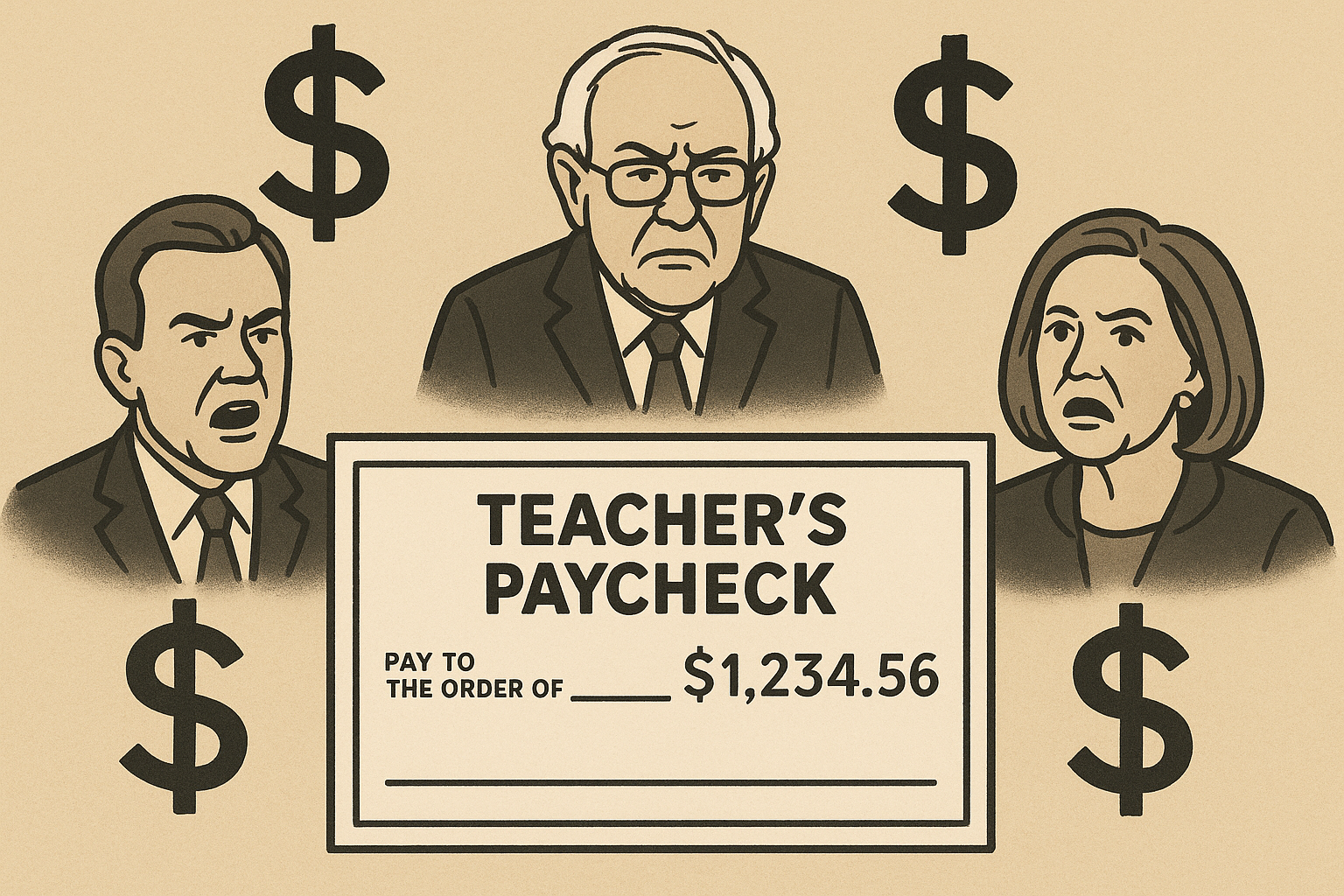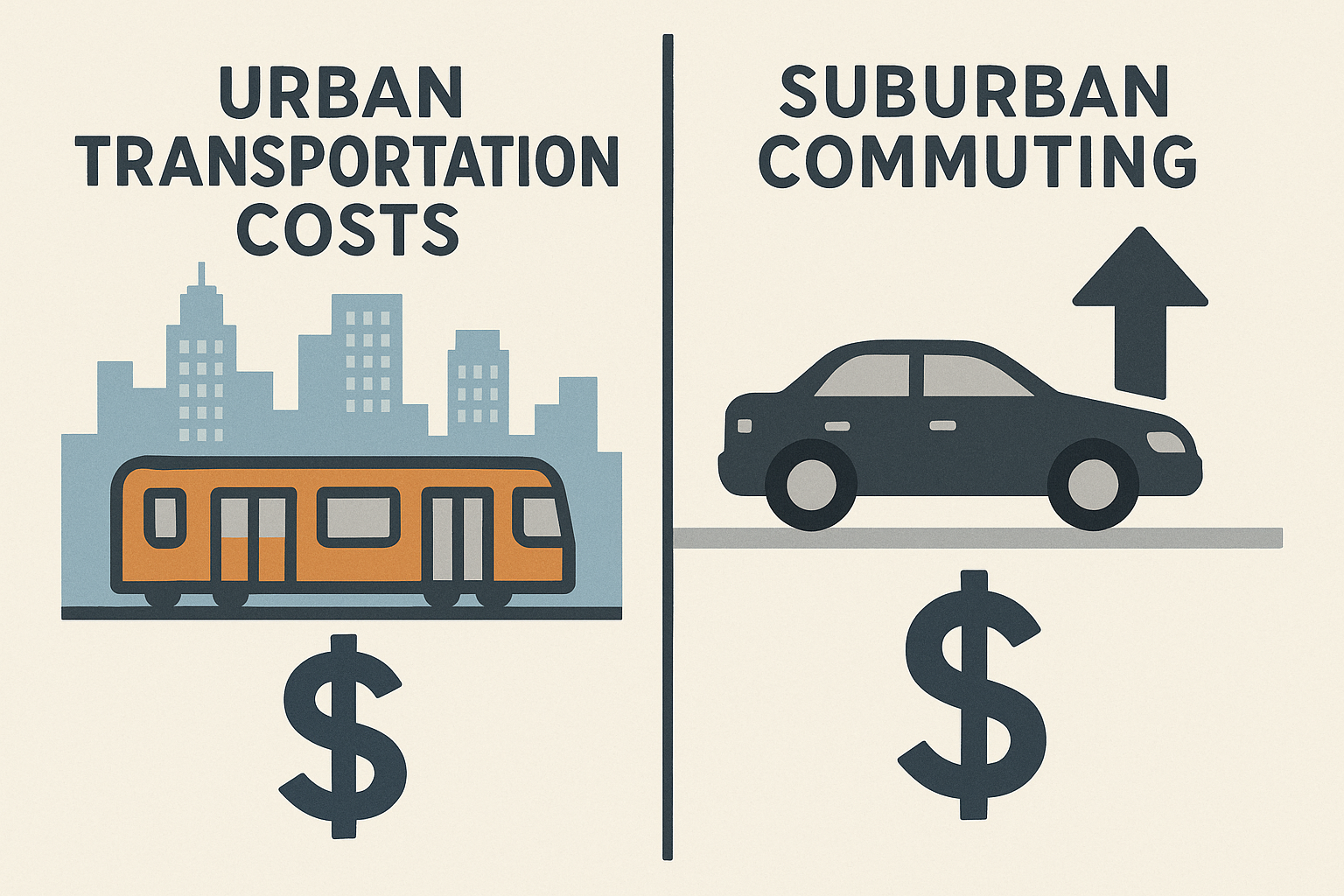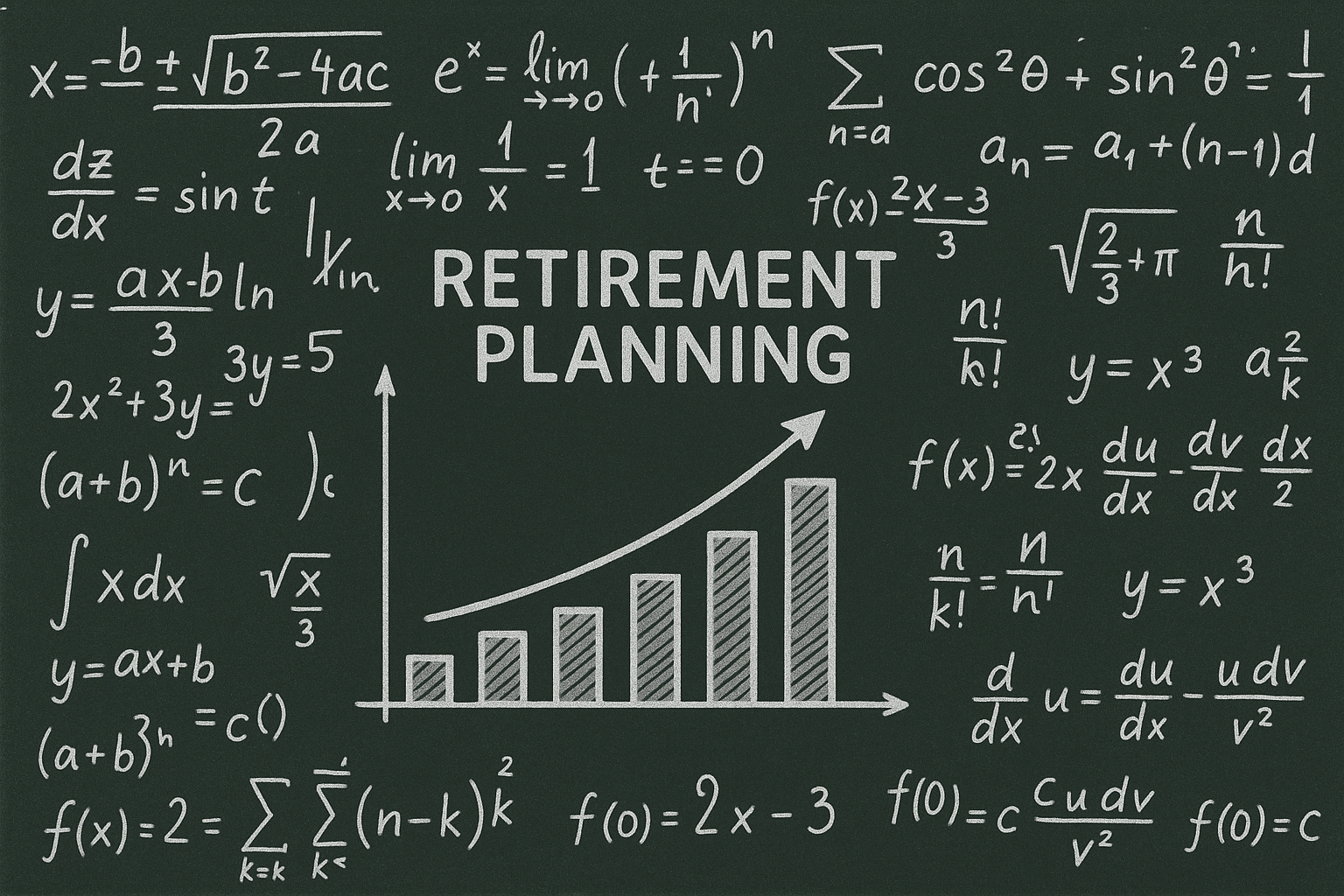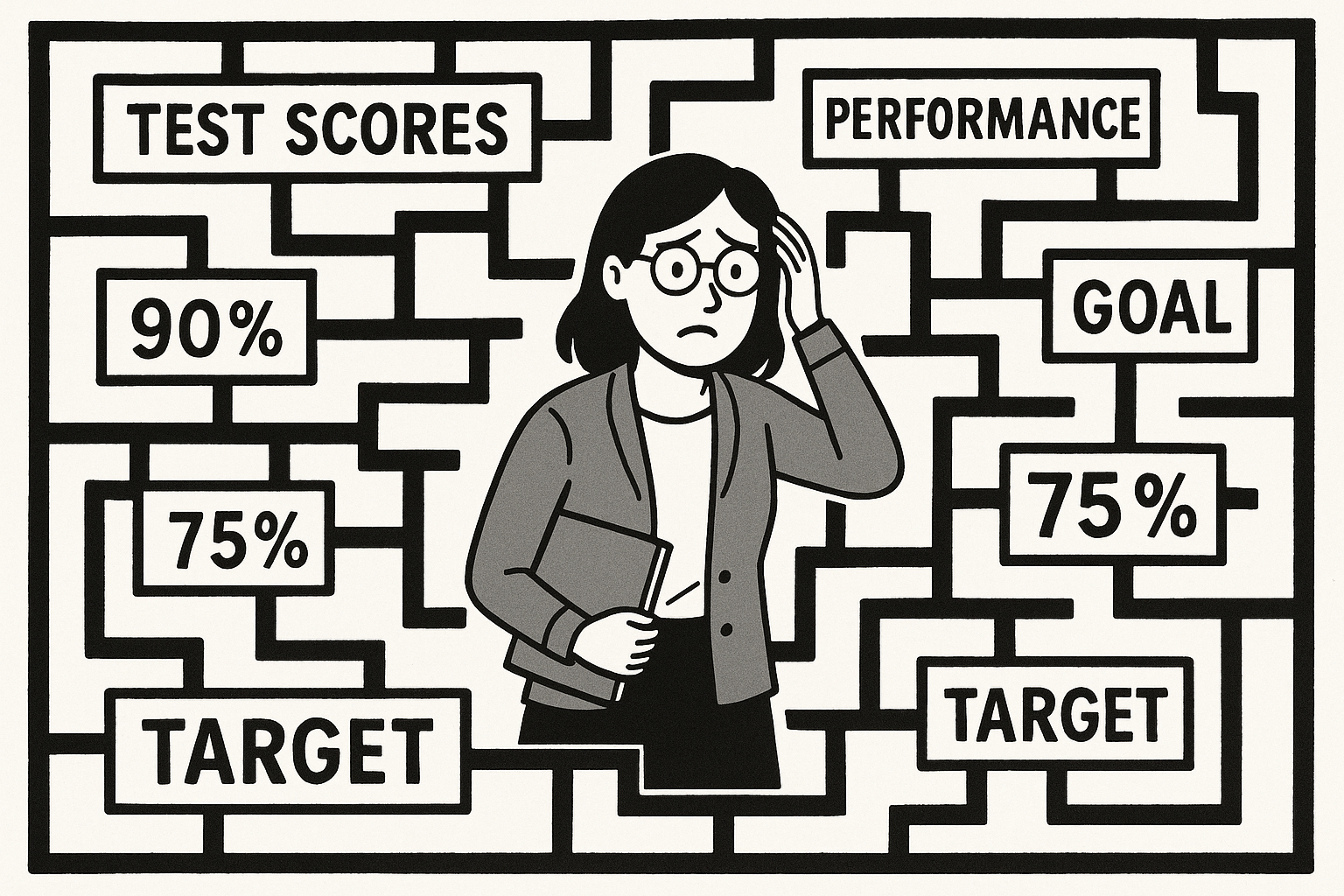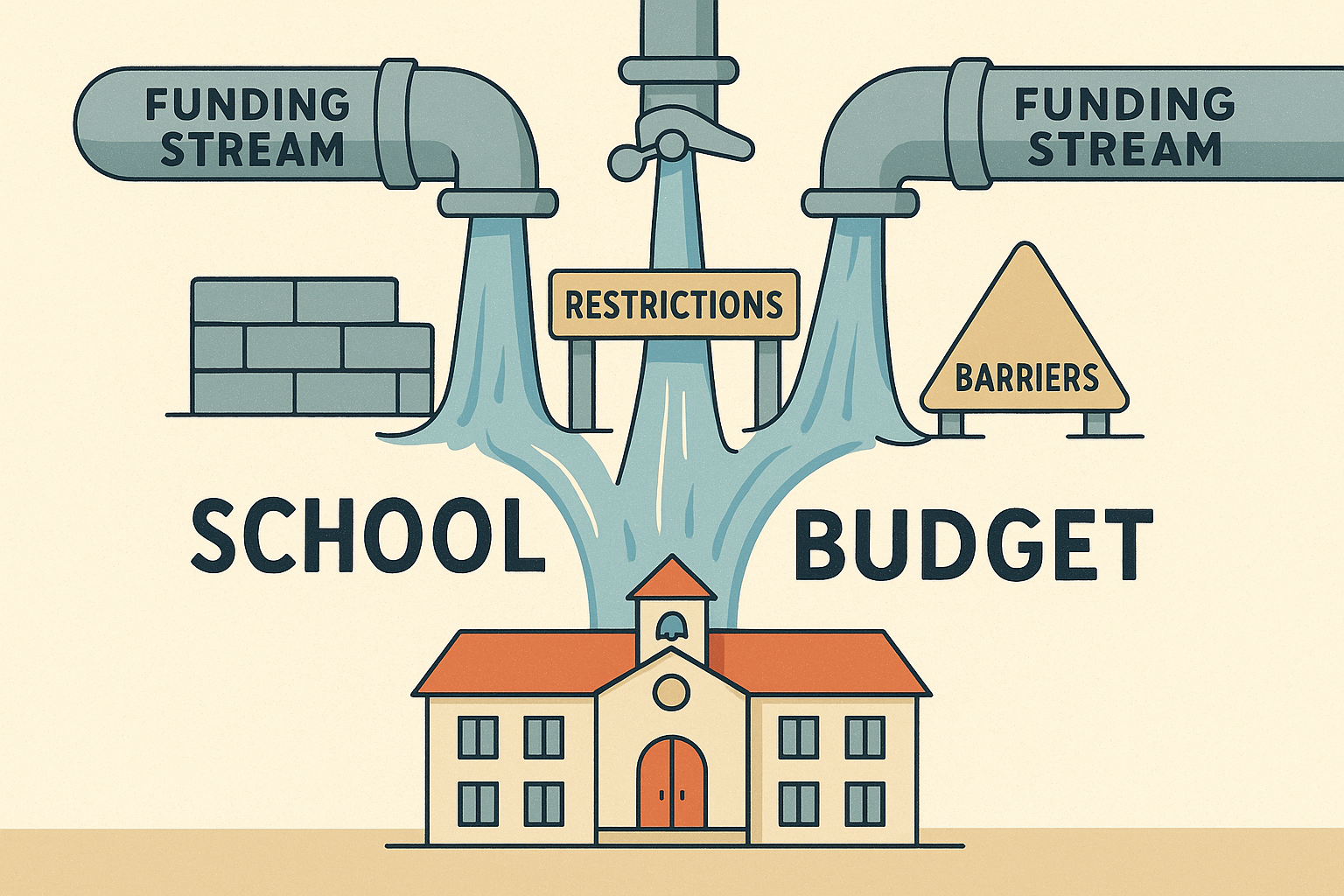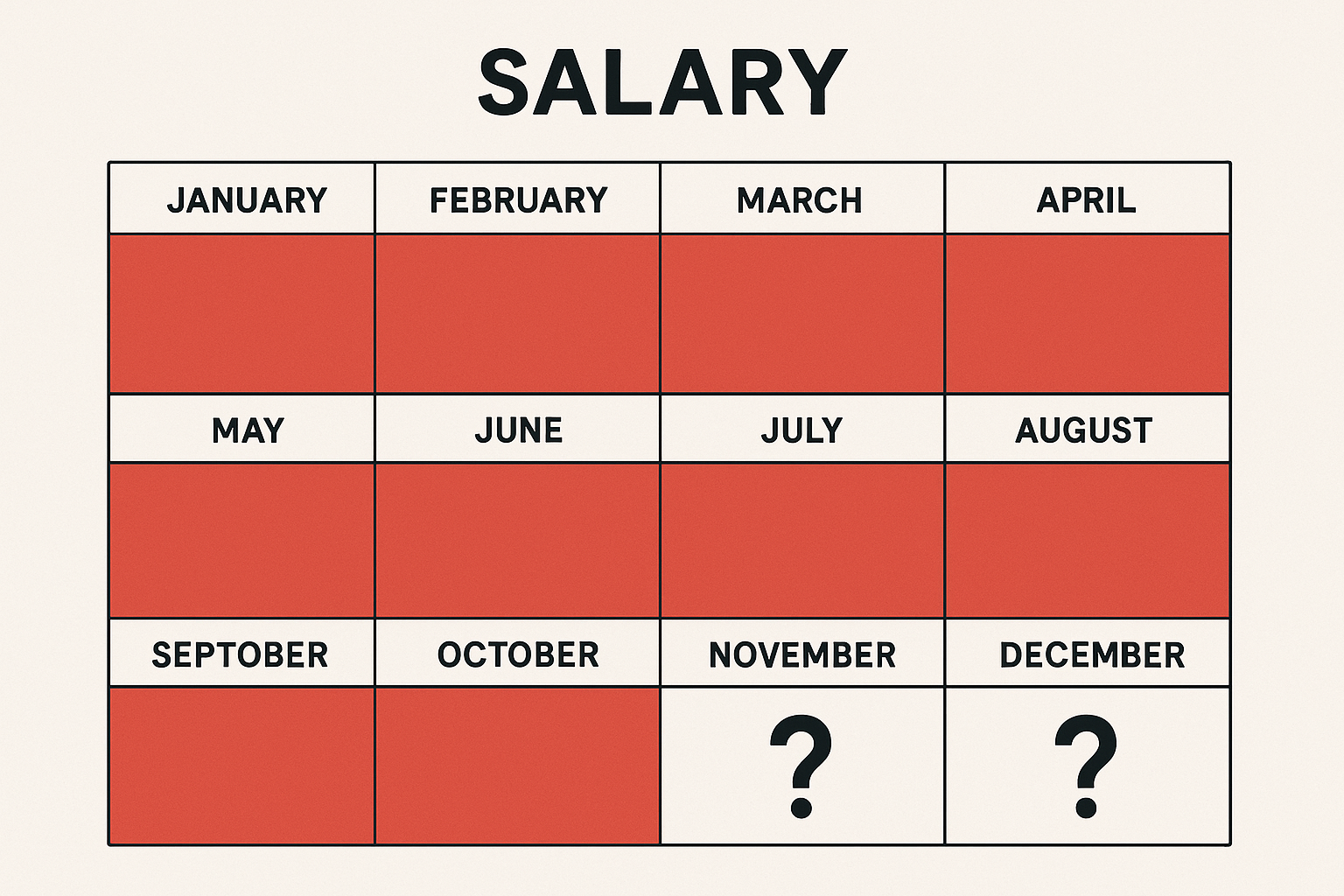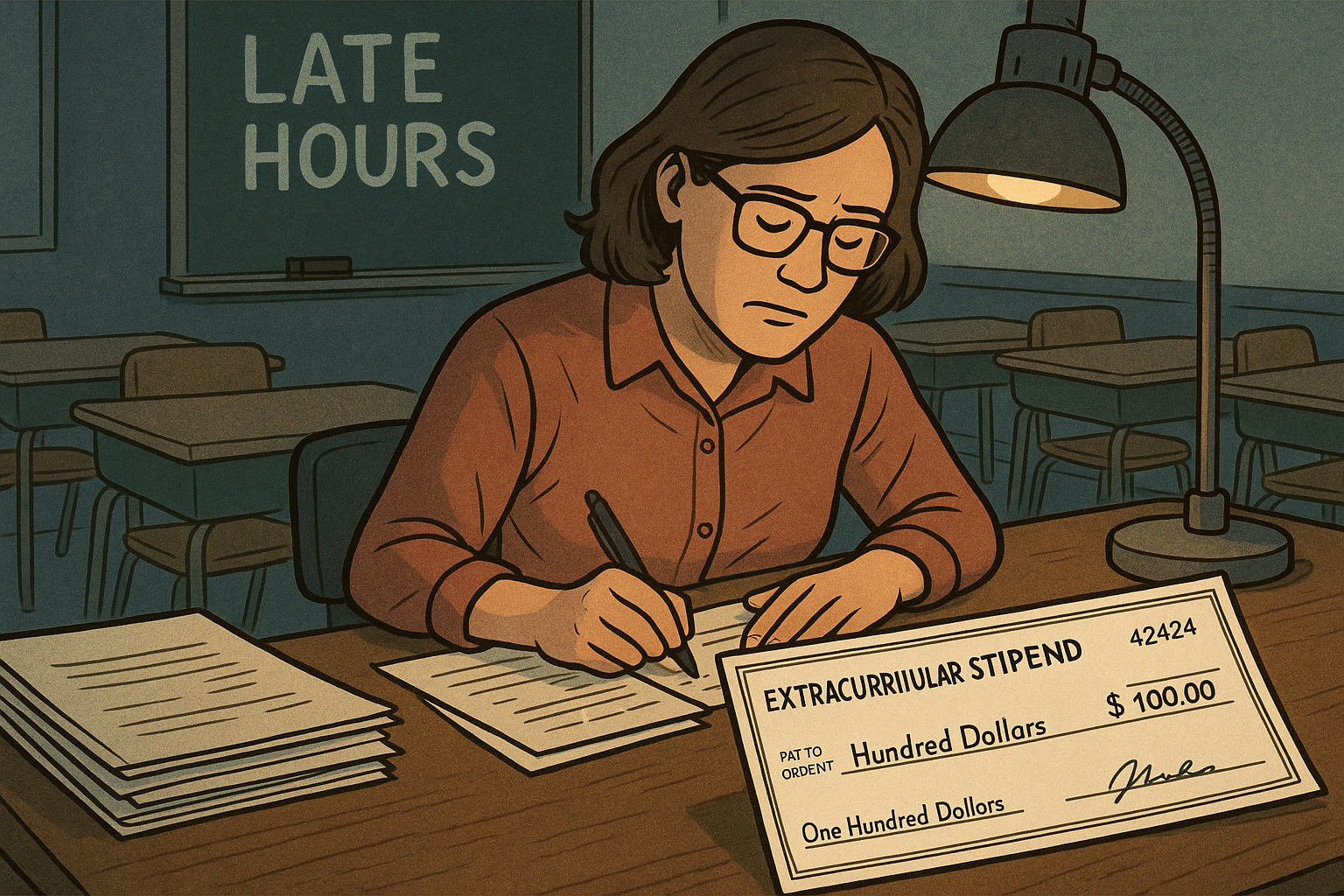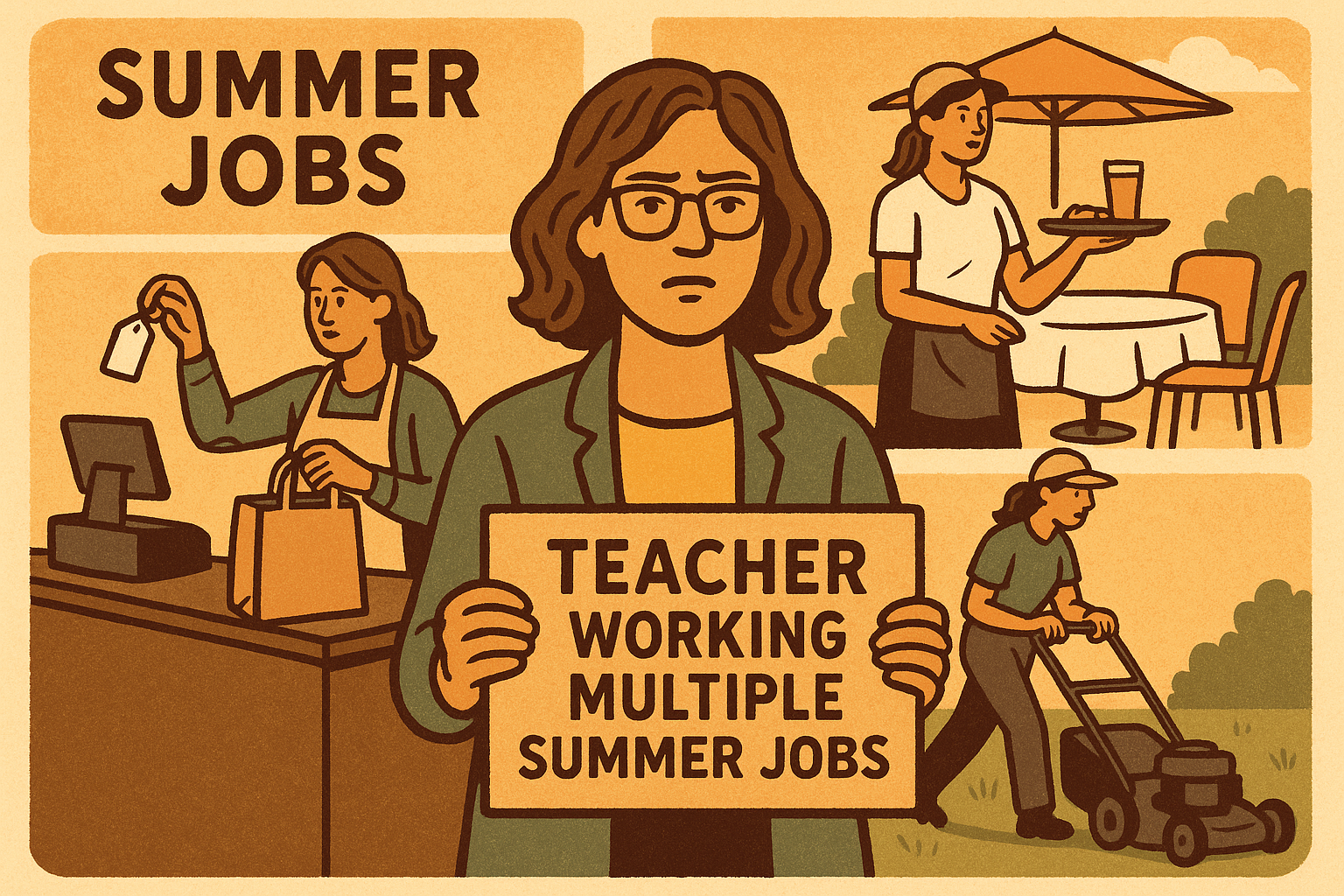Today’s average CPS teacher has seen a salary increase of 86% since the 2011-2012 school year, which is over 2.5 times faster than inflation or the private sector according to Illinois Policy Institute. However, this statistic only tells part of the story about the complex financial reality facing Chicago Public Schools educators.
Table of Contents
- The Political Money Game Behind Your Paycheck
- Why Your Pension is Actually Your Real Salary
- The Suburban Competition That’s Killing Your Wallet
- Performance Pay: When Merit Becomes a Trap
- The Budget Shell Game That Controls Your Income
- Technology Skills That Don’t Pay the Bills
- Summer Survival: Making 10 Months Last 12
- How ValidGrad Helps During Career Transitions
- Final Thoughts
TL;DR
- CPS teachers receive significantly more total compensation than their gross salary shows, but most comes decades later through pension benefits
- Every $1 in current salary creates approximately $2.50 in future pension obligations, creating hidden debt that limits current pay increases
- CPS must compete with 300+ suburban districts that can offer higher salaries through property tax bases CPS can’t replicate
- Performance-based pay systems often create perverse incentives that undermine both teaching quality and fair compensation
- Federal, state, and local funding streams each have restrictions that limit how salary money can be spent
- Teachers in high-demand subjects like STEM and special education don’t receive salary premiums despite market scarcity
- Many CPS teachers must find summer employment to maintain their standard of living despite being education professionals
The Political Money Game Behind Your Paycheck
Understanding CPS teacher compensation means diving into the messy world of municipal finances, union negotiations, and educational policy. I’ve discovered that salary structures aren’t just about what you deserve or what the market demands – they’re shaped by political forces and financial constraints that most people never consider. The interplay between these factors creates a compensation system that often seems disconnected from actual teaching performance or market rates.
When I started researching CPS teacher salary structures, I quickly realized that the numbers on your paycheck represent only a fraction of the real story. Political decisions made in Springfield, Washington, and City Hall directly impact how much money ends up in your bank account each month.
The Pension Shadow System That Controls Everything
While everyone argues about current salaries, the real financial story lies in how pension obligations create a secondary compensation system affecting every salary decision. This shadow system operates behind the scenes, influencing negotiations and budget allocations in ways that aren’t immediately obvious to teachers or the public.
Your Real Paycheck Comes 30 Years Later
CPS teachers actually receive significantly more total compensation than their gross salary suggests, but most of it arrives decades later through pension benefits. This deferred compensation reality means you’re essentially working today for money you’ll receive when you’re 65, creating a unique financial planning challenge that other professionals don’t face.
Every dollar you earn in current salary generates approximately $2.50 in future pension obligations. That’s not just accounting magic – it’s real money that someone has to pay eventually. Current taxpayers fund benefits for teachers who retired before they were born, while you’re funding your own future benefits through this complex actuarial system.
Think about it: if you’re making $60,000 now, the district is actually committing to about $150,000 in total compensation when you factor in the pension multiplier effect. This creates a cross-generational wealth transfer that influences every salary negotiation.
Understanding the full picture of your compensation becomes crucial when considering career transitions, especially if you need to verify your educational credentials for better opportunities.
| Current Salary | Pension Multiplier | Total Lifetime Compensation |
|---|---|---|
| $40,000 | $100,000 | $140,000 |
| $60,000 | $150,000 | $210,000 |
| $80,000 | $200,000 | $280,000 |
| $100,000 | $250,000 | $350,000 |
The $10 Billion Debt That Caps Your Salary
CPS’s massive pension debt (over $10 billion) creates artificial salary caps that have nothing to do with your teaching performance or market rates. This unfunded liability influences every budget decision and limits the district’s ability to offer competitive base pay.
Approximately 15-20% of every salary increase gets immediately consumed by increased pension contributions. When the union negotiates a 3% raise, you might only see 2.4% in your actual paycheck because the rest goes to pension funding.
Union negotiations often focus on protecting existing pension benefits rather than increasing current salaries. It’s a strategic trade-off that makes sense from a long-term perspective, but it means your current financial struggles might continue while your retirement security improves.
The Geographic Money Trap You’re Stuck In
CPS teacher salaries exist within a unique economic ecosystem where Chicago’s cost of living, suburban competition, and Illinois tax structure create unusual compensation dynamics. You’re competing in a market where the rules are stacked against urban districts.
Why Suburban Districts Always Win the Salary Game
CPS must compete with over 300 suburban districts, each with different funding mechanisms, creating a complex salary benchmark system. These districts can offer higher salaries through property tax bases that CPS simply cannot replicate, forcing alternative compensation strategies that often fall short.
Wealthy suburban districts operate on property tax dependency models that give them massive advantages. A district like New Trier can offer starting CPS salaries $15,000-20,000 higher than CPS because their property tax base per student is dramatically different. You’re not just competing against other teachers – you’re competing against entire economic systems.
Consider Sarah, a first-year chemistry teacher choosing between CPS and Hinsdale District 86. CPS offers $42,000 starting salary, while Hinsdale offers $58,000. However, Sarah’s commute to Hinsdale costs $300 monthly in gas and tolls, plus she needs professional attire for the suburban environment. After calculating real costs, her take-home advantage shrinks to about $12,000 annually – still significant, but not as dramatic as the gross salary difference suggests.
The Urban Tax You Pay That Nobody Talks About
CPS teachers face unique urban expenses like parking, transportation, and security that suburban teachers don’t encounter, but these rarely factor into salary calculations. This creates an effective pay cut that’s invisible in salary comparisons.
Many CPS teachers can’t afford to live in the neighborhoods where they teach. Housing market displacement means you might spend 90 minutes commuting each way, or you’re paying $200+ monthly for parking near your school. Suburban teachers typically drive 15 minutes to work and park for free.
Transportation costs hit differently in the city. You’re either paying CTA fares daily (about $100+ monthly) or dealing with urban parking fees that can run $150-300 per month. These aren’t luxuries – they’re professional requirements that effectively reduce your real compensation.
The Grant Dependency Trap
Many CPS teachers don’t realize that portions of their salary come from federal grants that create job insecurity and limit salary growth potential. When grants expire or get cut, teaching positions disappear regardless of performance quality.
You might be an excellent teacher, but if your position is funded through a three-year federal grant, your job security depends on political decisions made in Washington. I’ve seen teachers lose positions not because of poor performance, but because grant funding dried up.
Categorical funding restrictions mean federal money often can’t be used for general salary increases. The district has to get creative with accounting – using federal funds to pay for specific positions, then shifting local money to cover salary increases. It works until the federal money stops flowing.
The Maintenance of Effort Straightjacket
Federal education funding requires CPS to maintain certain spending levels, limiting flexibility in salary negotiations and creating bureaucratic constraints that don’t necessarily improve education quality.
The maintenance of effort requirement means CPS can’t reduce local spending on education even when federal money increases. Sounds good in theory, but it creates rigid budget structures that limit creative compensation solutions.
Compliance costs associated with federal funding eat into the actual dollars available for teacher salaries. You need administrators to track spending, file reports, and ensure compliance – that’s money not going to your paycheck.
State Politics Playing With Your Paycheck
Illinois’s funding formula and political dynamics create additional constraints on CPS teacher salaries that have little to do with educational priorities and everything to do with state-level political considerations.
The Adequacy Target Shell Game
The state’s evidence-based funding model calculates what CPS “needs” for adequate funding, then provides significantly less, creating a structural deficit that affects salary negotiations and long-term compensation planning.
Illinois calculates that CPS needs significantly more funding per pupil than it actually receives. The adequacy target gap means you’re working in a system that’s systematically underfunded by design, not by accident.
The tier system places CPS in a category that assumes higher local property tax capacity than actually exists. You’re getting less state support because politicians in Springfield think Chicago can raise more local money than it realistically can.
Property Tax Limitations That Hurt Your Wallet
Unlike suburban districts, CPS cannot easily increase property taxes to fund salary increases, limiting local revenue options and creating structural disadvantages in teacher compensation.
Tax Increment Financing (TIF) districts in Chicago capture property tax increases that could otherwise fund teacher salaries. Millions of dollars that could go to education get diverted to development projects instead.
CPS faces political constraints on property tax increases that suburban districts don’t encounter. Raising taxes in Chicago involves city council politics, mayoral priorities, and voter resistance that makes salary funding more complicated.
The Union Strategy Game
Collective bargaining for CPS teacher salaries involves strategic considerations that extend far beyond simple wage negotiations, including political leverage, public relations, and long-term benefit protection.
When Strike Threats Drive Salary Decisions
The possibility of teacher strikes creates economic and political pressures that influence salary negotiations in ways that don’t always align with educational priorities or fiscal responsibility.
Public opinion leverage becomes a key factor in salary negotiations. Union strategies often focus on generating community support for salary increases, creating political pressure that can override budgetary constraints.
Strike economics affect more than just teachers – parents need childcare, businesses lose productivity, and politicians face voter anger. These external pressures sometimes drive salary decisions more than actual budget capacity.
According to the Illinois Policy Institute, the Chicago Teacher’s Union contract will increase teacher salaries from $1.1 billion to $1.25 billion by the 2027-2028 school year, with the contract estimated to add an additional $1.5 billion to district expenses over four years.
Recent contract negotiations highlight these dynamics. According to “ABC7 Chicago”, CPS has offered teachers a 16% raise over four years, making them potentially the highest paid in the country except for some New York City teachers, while CTU has countered with a 24% raise demand. The district maintains it can’t afford to go higher than its current offer.
Multi-Year Contract Complications
CPS teacher contracts typically span multiple years, but budget uncertainties and political changes make it difficult to commit to future salary increases, creating ongoing uncertainty for both teachers and administrators.
Inflation adjustment mechanisms in teacher contracts often lag behind actual inflation. You might get a 2% raise while inflation runs at 4%, creating a real wage decrease despite getting a “raise.”
Reopener clause strategies allow contract renegotiation under certain circumstances, but they create ongoing salary uncertainty. You never know if your negotiated raise will actually materialize or get renegotiated away.
Why Your Pension is Actually Your Real Salary
The pension system represents the largest component of CPS teacher compensation, but it operates as deferred income that creates both security and financial planning challenges. Understanding how this system works is crucial for making informed career decisions and financial plans.
The Deferred Compensation Reality Nobody Explains
Your pension represents a significant portion of your total lifetime compensation from CPS, but accessing it requires decades of service and specific retirement conditions. This creates a golden handcuffs effect that influences career decisions in ways that immediate salary alone wouldn’t.
The Teachers’ Retirement System (TRS) formula means your pension could be worth $1-2 million over your retirement lifetime, depending on your final salary and years of service. That’s real money, but it’s money you can’t access for decades.
Here’s what gets tricky: if you leave CPS before vesting fully, you might forfeit significant pension benefits. This creates pressure to stay even when other opportunities offer higher current salaries. You’re essentially trapped by future money.
The Actuarial Math That Controls Your Career
Pension calculations involve complex actuarial formulas that determine your retirement income based on final salary, years of service, and retirement age. Understanding these calculations helps you make informed decisions about salary negotiations and career timing.
Your pension gets calculated using your highest four consecutive years of salary, multiplied by years of service, multiplied by a percentage factor. Small salary increases in your final years can have massive impacts on lifetime pension income.
This is why veteran teachers often focus on end-of-career salary bumps rather than steady increases throughout their careers. A $5,000 salary increase in your final year might generate an additional $3,000 annually in pension income for 20+ years of retirement.
Pension Planning Checklist:
- Calculate your projected pension using TRS online calculator
- Track your highest four consecutive years of salary
- Understand vesting requirements and timelines
- Plan end-of-career salary strategies
- Consider impact of early retirement penalties
- Review beneficiary designations annually
- Understand Social Security coordination rules
The Suburban Competition That’s Killing Your Wallet
CPS operates in a competitive market where suburban districts can offer significantly higher salaries due to different funding mechanisms and lower operational costs. This competition affects not just starting salaries but career progression and retention strategies.
The Property Tax Advantage You’ll Never Have
Suburban districts benefit from property tax systems that generate more revenue per student, allowing them to offer higher teacher salaries without the budget constraints that CPS faces. This structural disadvantage affects every aspect of compensation planning.
Districts like Winnetka or Hinsdale can offer starting salaries in the $50,000-60,000 range while CPS starts closer to $40,000-45,000. The difference isn’t just policy – it’s mathematics. Their property tax base per student might be 3-4 times higher than what CPS can access.
You’re competing for talent against districts that have fundamentally different economic resources. Playing basketball where the other team gets to use a lower hoop would be frustrating, and that’s essentially what CPS faces in teacher recruitment.
The Hidden Costs of Urban Teaching
Teaching in Chicago involves expenses and challenges that suburban educators don’t face, effectively reducing your real compensation even when gross salaries appear competitive. These hidden costs rarely get factored into salary comparisons.
Security concerns mean you might need to replace stolen items from your car or classroom more frequently. I’ve talked to CPS teachers who’ve had their cars broken into multiple times in school parking lots.
Professional clothing requirements hit differently when you’re taking public transportation. Your clothes wear out faster, dry cleaning costs more, and you need weather-appropriate options for walking to transit stops.
When considering career moves to suburban districts, having quick access to your educational credentials becomes essential for salary negotiations and application processes.
The recent contract agreement demonstrates the ongoing salary pressure. According to “Illinois Policy Institute”, the average Chicago Public Schools teacher will see their chicago teacher salary increase to more than $114,000 by the 2027-2028 school year, with the average teacher currently earning $86,439 set to receive a nearly $28,000 raise over four years.
Take Maria, a 10-year veteran teacher at a South Side high school. Her official salary is $65,000, but her real costs include: $180 monthly parking, $150 monthly for professional clothing replacement due to urban wear, $200 monthly for additional security measures (car alarm, classroom locks), and $100 monthly for transportation backup when CTA fails. These urban-specific costs reduce her effective salary by $7,560 annually – money that suburban teachers keep in their pockets.
Performance Pay: When Merit Becomes a Trap
CPS has experimented with various performance-based compensation systems, but the reality of measuring teacher effectiveness in urban environments creates compensation structures that often contradict their intended purposes. These systems can actually undermine both teaching quality and fair compensation.
The Standardized Testing Salary Trap
Linking teacher pay to student test scores creates perverse incentives that can actually reduce teaching effectiveness while creating unfair compensation disparities based on student demographics rather than teacher performance.
When your salary depends on test scores, rational economic behavior involves narrowing your curriculum focus to tested subjects. You end up spending personal money on test prep materials instead of enrichment activities, effectively reducing your real compensation while potentially diminishing your teaching effectiveness.
Teachers in schools with challenging student populations face an impossible situation: their students might make tremendous growth that doesn’t show up in standardized test scores, but their compensation suffers because the metrics don’t capture that progress.
The Evaluation Gaming System
Complex evaluation rubrics designed to ensure fair pay distribution often become bureaucratic exercises that consume time without improving compensation equity or teaching quality. The administrative burden of these systems can actually detract from teaching effectiveness.
I’ve seen evaluation systems so complex that teachers spend more time documenting their teaching than actually improving it. When you’re filling out rubrics and collecting evidence portfolios, that’s time not spent on lesson planning or student feedback.
The irony is that these systems often reward teachers who are good at paperwork rather than teachers who are good at teaching. Your compensation becomes tied to your ability to navigate bureaucracy rather than your ability to educate students.
The Budget Shell Game That Controls Your Income
CPS teacher salaries are determined through a complex budgeting process involving federal, state, and local funding streams, each with different restrictions and political considerations. Understanding this process helps explain why salary negotiations often seem disconnected from educational priorities.
Federal Money With Strings Attached
Title I and other federal programs provide significant funding for CPS teacher salaries, but come with restrictions that limit how money can be spent and create salary instability when grants aren’t renewed.
Many CPS teachers receive portions of their compensation through federal grants that might not be renewed. You could be doing excellent work, but if Congress changes funding priorities, part of your salary disappears.
Federal money often can’t be used for general salary increases, forcing creative accounting methods to fund teacher compensation. The district might use federal funds to pay for specific positions, then use the freed-up local money for salary increases – it’s a shell game that works until the federal money stops.
| Funding Source | Restrictions | Salary Impact | Stability |
|---|---|---|---|
| Federal Title I | Specific programs only | Indirect through position funding | Grant-dependent |
| State Foundation | General operations | Direct salary support | Politically volatile |
| Local Property Tax | Limited by tax caps | Primary salary funding | Most stable |
| Federal IDEA | Special Education only | Specialized position funding | Grant-dependent |
The State Funding Formula That Shortchanges CPS
Illinois’s evidence-based funding model creates a complex calculation system that affects how much money CPS receives for teacher salaries, often providing less support than the formula suggests is needed.
The state funding formula places CPS in a tier that assumes higher local property tax capacity than actually exists. You’re getting less state support because the formula thinks Chicago can raise more local money than it actually can.
CPS receives less state funding per pupil than the formula suggests is needed, creating a structural salary constraint that has nothing to do with district priorities or teacher performance.
Union Contract Chess Moves
CPS teacher salaries are ultimately determined through collective bargaining, but the process involves strategic considerations that go far beyond simple wage negotiations and can create ongoing salary uncertainty.
Strike threat economics create pressures that influence salary negotiations in ways that don’t always align with educational priorities. Sometimes the threat of a strike generates public support for salary increases that override budgetary constraints.
Multi-year contracts create complications when budget uncertainties make it difficult to commit to future salary increases. Cost-of-living adjustments often lag behind actual inflation, creating real wage decreases over time even when you’re getting “raises.”
Technology Skills That Don’t Pay the Bills
CPS faces unique challenges in compensating teachers for technology integration and innovative teaching methods that aren’t reflected in traditional salary structures. Teachers often invest personal resources in professional development that benefits the district without receiving corresponding compensation.
The Digital Divide Tax on Your Wallet
Teachers who become technology leaders often invest personal time and money in skills that benefit the district but aren’t compensated through traditional salary scales. This creates an effective professional tax on innovative educators.
Many CPS teachers spend hundreds of dollars annually on technology tools, software subscriptions, and home internet upgrades to effectively teach remotely or integrate digital learning. Post-pandemic teaching requires professional home setups that you fund personally, effectively reducing your real compensation.
You might pursue technology certifications on weekends and summers without additional compensation, despite adding significant value to your teaching effectiveness. The district benefits from your expertise, but your paycheck doesn’t reflect your additional qualifications.
Meet Jennifer, a 5th-grade teacher who became her school’s unofficial tech coordinator during the pandemic. She invested $800 in home office equipment, $300 annually in software subscriptions, and 40 hours of unpaid weekend time learning new platforms. While her colleagues rely on her expertise daily, her salary remains unchanged at $52,000. The district saves approximately $15,000 annually by not hiring a dedicated tech coordinator, but Jennifer receives no compensation for filling this role.
The STEM Teacher Market Reality
CPS struggles to attract and retain teachers in high-demand subjects like STEM, special education, and bilingual education, but salary structures don’t adequately reflect market scarcity or the opportunity costs these teachers face.
According to recent data, CPS faces teacher shortages in critical areas, with special education positions having a turnover rate of nearly 20% annually, significantly higher than the district average, yet these high-demand positions receive no salary premium despite the market scarcity.
A chemistry teacher might earn $40,000-60,000 more annually in pharmaceutical or chemical industries, but CPS pays them the same as social studies teachers. The salary structure doesn’t account for the opportunity cost of choosing education over industry careers.
Special education teachers handle significantly more paperwork, legal compliance, and challenging behavioral situations without proportional salary increases. You face potential legal consequences for IEP compliance failures, adding professional risk without compensation adjustment.
The Innovation Penalty Nobody Discusses
CPS teachers who embrace innovation and technology leadership often find themselves penalized financially, investing personal resources and time in professional development that benefits the district without corresponding compensation increases.
The Personal Investment Tax on Excellence
Teachers who become technology leaders or curriculum innovators typically invest significant personal resources in professional development and tools that benefit their students and the district, but traditional salary structures don’t recognize or compensate these contributions.
Professional development opportunity costs hit hard when you’re pursuing technology certifications on weekends and summers without additional compensation. You’re adding value to your teaching effectiveness, but your paycheck doesn’t reflect your additional qualifications.
Home office setup costs became a hidden professional expense post-pandemic. You need reliable internet, quality cameras, proper lighting, and quiet spaces to teach effectively – all funded from your own pocket while your salary stays the same.
The Mentorship Role Expansion Problem
Technology-savvy teachers frequently become informal mentors and support systems for colleagues, providing valuable professional development and technical support without any compensation for these additional responsibilities.
When you become the “tech person” at your school, colleagues constantly ask for help with everything from Google Classroom to video conferencing. You’re providing professional development services that the district would otherwise pay consultants to deliver.
Pilot program participation often means taking on additional responsibilities, learning new systems, and dealing with implementation problems – all without corresponding salary increases. You’re essentially doing curriculum development work for free.
The Subject Scarcity Premium That Doesn’t Exist
Despite severe shortages in subjects like STEM, special education, and bilingual education, CPS salary structures don’t provide market-based premiums that reflect the scarcity and specialized skills required for these positions.
The STEM Opportunity Cost Reality
Science and math teachers face significant opportunity costs by choosing education over private sector careers, but CPS compensation doesn’t account for the market value of their skills or the alternative career paths they’re forgoing.
Industry alternative salaries create a constant temptation for STEM teachers. A chemistry teacher with a strong background could easily earn $40,000-60,000 more annually in pharmaceutical or chemical industries, but CPS pays them the same as social studies teachers.
The skills shortage in STEM education is real, but salary structures don’t reflect market scarcity. You’re competing against private sector jobs that offer better compensation, more resources, and often less bureaucracy.
The Special Education Complexity Premium Gap
Special education teachers handle significantly more legal compliance, paperwork, and challenging behavioral situations than general education teachers, but receive the same base salary despite the additional responsibilities and professional risks.
Legal liability exposure creates professional risks that other teachers don’t face. IEP compliance failures can result in lawsuits, due process hearings, and personal liability – but your salary doesn’t reflect this additional risk.
Emotional labor intensity in special education creates higher burnout rates and psychological demands. You’re dealing with behavioral challenges, family crises, and complex medical needs that require specialized training and emotional resilience.
Consider David, a special education teacher with 8 years of experience. His base salary is $58,000, the same as general education teachers. However, he manages 15 IEPs requiring 2-3 hours of paperwork weekly, attends monthly due process meetings, coordinates with 6 different specialists per student, and faces potential legal liability for compliance failures. His effective hourly wage, when accounting for all required duties, drops to about $18 per hour – less than many retail positions that carry no legal liability.
Summer Survival: Making 10 Months Last 12
The unique seasonal nature of teaching creates financial planning challenges that most other professionals never face, from summer income gaps to irregular cash flow patterns that affect everything from mortgage applications to retirement planning.
The Summer Employment Reality
Many CPS teachers must find summer employment to maintain their standard of living, effectively working year-round despite being paid for 10 months. This creates professional and financial planning challenges unique to education.
While you can opt for 12-month pay distribution, your actual work year creates cash flow challenges that affect your real economic position. Many teachers face the choice between earning summer income or pursuing professional development that could improve their teaching but doesn’t immediately increase salary.
Teachers who aren’t paid during summer months may face healthcare premium payments that reduce their effective annual compensation. The administrative burden of applying for unemployment benefits during summer months adds another layer of complexity to financial planning.
The Cash Flow Management Challenge
Even teachers who opt for 12-month pay distribution face unique financial planning challenges related to the seasonal nature of their work and the irregular income patterns that result from the education calendar.
Summer employment necessity forces many teachers to work year-round despite being education professionals. You might spend summers doing retail work, tutoring, or other jobs that don’t utilize your professional skills just to maintain your standard of living.
Healthcare continuation costs during summer months can create unexpected expenses. If you’re not paid during summer, you might face COBRA payments or gaps in coverage that effectively reduce your annual compensation.
When transitioning between positions or seeking summer employment, having immediate access to your academic credentials can be crucial for quick hiring processes.
The Professional Development vs. Income Dilemma
Teachers face difficult choices between earning summer income and pursuing professional development opportunities that could improve their teaching effectiveness but don’t provide immediate financial benefits.
Graduate coursework timing often conflicts with summer employment opportunities. You can either earn money or earn credits toward salary advancement, but rarely both simultaneously.
Conference and workshop costs come out of your pocket when professional development happens during unpaid summer months. You’re investing in your career while simultaneously losing income opportunities.
The Extracurricular Economics Trap
Additional duties like coaching and club sponsorship offer supplemental income, but the actual time investment often results in effective hourly wages well below minimum wage, creating a system that exploits teacher dedication.
The Coaching Compensation Mathematics
Athletic coaching stipends appear to offer additional income, but when calculated against actual time investment, coaches often earn less per hour than minimum wage while taking on significant additional responsibilities and liabilities.
Equipment and travel responsibilities extend far beyond practice and game time. You’re managing inventory, coordinating transportation, handling medical emergencies, and dealing with parent complaints – all for a stipend that might work out to $3-4 per hour.
Liability and supervision requirements create legal risks that aren’t reflected in compensation. If a student gets injured during practice or a team trip, you could face personal liability that far exceeds your coaching stipend.
The Club Leadership Exploitation
Teachers who sponsor academic clubs, drama productions, or other extracurricular activities often invest hundreds of hours annually for minimal compensation, effectively subsidizing school programs through their unpaid labor.
Drama productions might require 200+ hours of work for a $1,000 stipend. You’re directing, teaching, coordinating costumes, managing budgets, and dealing with parent drama (literally) for about $5 per hour.
Academic competition coaching involves weekend tournaments, after-school practices, and extensive preparation time. The stipend rarely covers even your transportation costs to competitions, much less your time investment.
| Activity | Annual Stipend | Estimated Hours | Effective Hourly Rate |
|---|---|---|---|
| Head Football Coach | $4,000 | 400 hours | $10.00 |
| Drama Director | $1,500 | 300 hours | $5.00 |
| Debate Coach | $1,200 | 200 hours | $6.00 |
| Chess Club Sponsor | $500 | 100 hours | $5.00 |
Summer Financial Planning Template:
- Calculate 10-month salary breakdown
- Identify summer income opportunities
- Budget for summer healthcare costs
- Plan professional development investments
- Set aside emergency fund for summer months
- Research unemployment benefits eligibility
- Consider 12-month pay distribution options
- Track extracurricular time vs. compensation
How ValidGrad Helps During Career Transitions
Understanding CPS teacher compensation becomes particularly relevant when considering career transitions and professional documentation needs. Teachers who have invested years in the CPS system often need to present their educational credentials when exploring new opportunities or negotiating better compensation packages.
When you’re ready to transition to suburban districts with different salary structures, pursue administrative roles, or move to other states, you need quick access to your educational documentation. ValidGrad’s diploma and transcript replacement services become valuable when salary negotiations depend on verified educational credentials.
Whether you need a replacement diploma for a new position or college transcripts for salary advancement, having reliable access to your educational documents is essential during career transitions.
The complexity of CPS teacher compensation often motivates educators to explore opportunities elsewhere. Having immediate access to professional-quality replacement documents can be crucial for securing better compensation packages or presenting your qualifications effectively during career transitions.
For teachers considering getting a degree to advance their careers and increase their earning potential, understanding the full compensation picture helps make informed decisions about educational investments.
Final Thoughts
CPS teacher compensation is far more complex than most people realize. Your salary isn’t just about what you earn today – it’s about pension obligations, funding restrictions, political negotiations, and market forces that operate behind the scenes. Understanding these dynamics helps you make informed decisions about your career and financial planning.
The system isn’t designed to be transparent or easy to understand. Federal funding restrictions, state formula calculations, pension obligations, and union negotiations all influence your paycheck in ways that aren’t immediately obvious. This complexity often works against teachers who are trying to plan their careers and finances.
Whether you stay in CPS or explore other opportunities, understanding the full picture of teacher compensation helps you advocate for yourself more effectively. Your value as an educator extends far beyond what appears on your pay stub, but navigating the systems that determine your compensation requires knowledge that goes well beyond teaching expertise.

